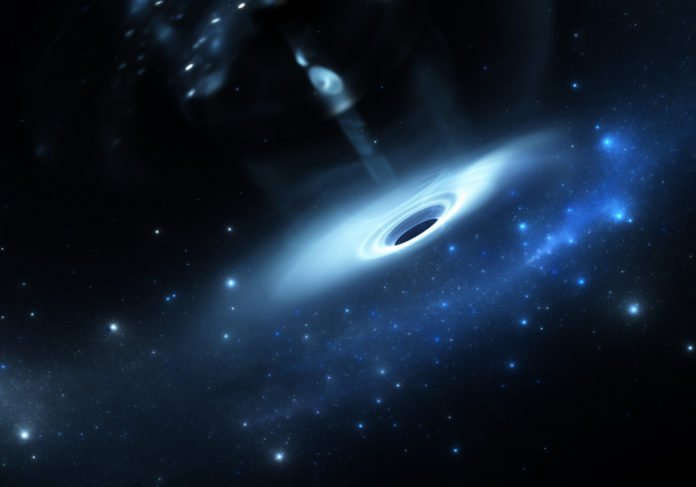Not long after the Big Bang, the universe went totally dim. The intense, seminal event that created the cosmos churned up so much hot, a thick gas that light was completely trapped. Perhaps, after the Big Bang, the universe expanded, became more transparent. In addition, the universe filled up with various objects that give off light.
But how it has risen up out of the inestimable dim ages to a clearer, the light-filled state remains a puzzle.
Now, Scientists at the University of Iowa have found the answer on how the universe became filled with light. They observed a nearby galaxy from which ultraviolet light is escaping. According to them, black holes that dwell in the center of galaxies fling out matter so violently that the ejected material pierces its cloudy surroundings, allowing light to escape.
Philip Kaaret, professor in the UI Department of Physics and Astronomy said, “The observations show the presence of very bright X-ray sources that are likely accreting black holes. It’s possible the black hole is creating winds that help the ionizing radiation from the stars escape. Thus, black holes may have helped make the universe transparent.”
Scientists mainly focused on a galaxy called Tol 1247-232. The Galaxy Tol 1247-232 is one of the nearby galaxy located some 600 million light years from Earth. Scientists found the ultraviolet light escaping from the galaxy.
In May 2016, utilizing an Earth-circling telescope called Chandra, the scientists saw a solitary X-beam source whose shine waxed and wound down and was situated inside an overwhelming star-framing district of Tol 1247-232.
The team determined it was something other than a star. Star does not change their brightness.
But how would a black hole, whose intense gravitational pull sucks in everything around it, also eject matter?
No one knows the answer. Although, black holes are difficult to study. Their immense gravitational pull allows no light to escape. But, scientists explained, “The jets of escaping matter are tapping into the accelerated rotational energy of the black hole itself.”
Kareet said, “As matter falls into a black hole, it starts to spin and the rapid rotation pushes some fraction of the matter out. They’re producing these strong winds that could be opening an escape route for ultraviolet light. That could be what happened with the early galaxies.”
Scientists are studying Tol 1247-232 more deeply and find other nearby galaxies that are leaking ultraviolet light. The discovery would collaborate this theory.
